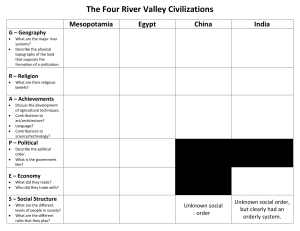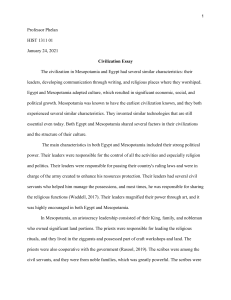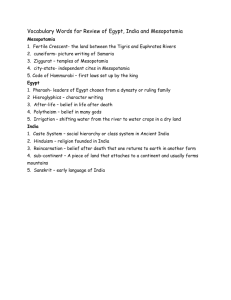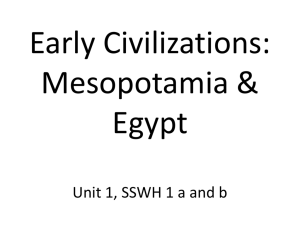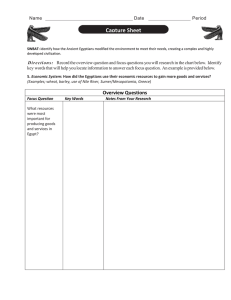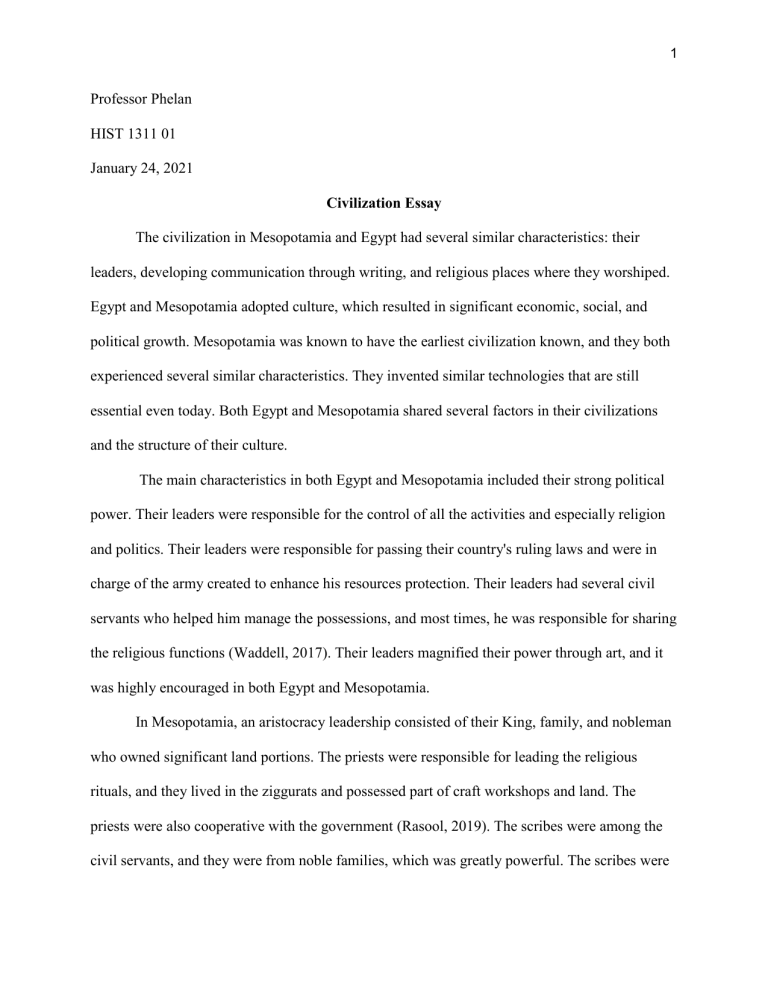
1 Professor Phelan HIST 1311 01 January 24, 2021 Civilization Essay The civilization in Mesopotamia and Egypt had several similar characteristics: their leaders, developing communication through writing, and religious places where they worshiped. Egypt and Mesopotamia adopted culture, which resulted in significant economic, social, and political growth. Mesopotamia was known to have the earliest civilization known, and they both experienced several similar characteristics. They invented similar technologies that are still essential even today. Both Egypt and Mesopotamia shared several factors in their civilizations and the structure of their culture. The main characteristics in both Egypt and Mesopotamia included their strong political power. Their leaders were responsible for the control of all the activities and especially religion and politics. Their leaders were responsible for passing their country's ruling laws and were in charge of the army created to enhance his resources protection. Their leaders had several civil servants who helped him manage the possessions, and most times, he was responsible for sharing the religious functions (Waddell, 2017). Their leaders magnified their power through art, and it was highly encouraged in both Egypt and Mesopotamia. In Mesopotamia, an aristocracy leadership consisted of their King, family, and nobleman who owned significant land portions. The priests were responsible for leading the religious rituals, and they lived in the ziggurats and possessed part of craft workshops and land. The priests were also cooperative with the government (Rasool, 2019). The scribes were among the civil servants, and they were from noble families, which was greatly powerful. The scribes were 2 assigned several roles, such as being managers, advisers among others. The rest of the population were slaves treated as objects or free people with rights. The free people included the craftsmen, the peasants, and the women are known to be men's properties. In Egypt, a pharaoh had all power and possessed most of the lands. The Pharaoh was responsible for the supervision of the trade and also leading the army into war. He was also in charge of regaining the country and even passing the laws that governed the country. The Pharaoh was considered a god in Egypt and could not be looked at in the eye or touched. Egyptians were supposed to kneel whenever the Pharaoh passed near them since he was thought to be the divinity and believed to have magical powers. The priests and noblemen were in charge of Egypt's most critical jobs, and they were members of the Pharaoh's family (Woodard, 2017). The priests led the religious rites, and they had large herds and many pieces of land, which made them wealthy, with many servants serving them. The scribes could write, read and count, leading to great character and an ideal economic situation. The scribes were responsible for writing documents that were official and keeping royal taxes accounts. Many peasants in Egypt were indigent and living along the river Nile in small mud-brick houses. All the family members were required to participate in farming activities, and the peasants had to build pyramids and other public buildings. The slaves were war prisoners, and they had no rights, with the largest owned by Pharaoh. There were also sailors, craftsmen, soldiers, and merchants. Civilization in both Mesopotamia and Egypt had significant similarities, and as a result, leadership, religion, and communication resulted in economic, social, and political growth. The two areas' structures resulted in a significant increase in the economy due to trade and wellstructured social roles and responsibilities. The kings enhanced a well-enabled leadership by protecting the boundaries and embraced economic development, primarily through agriculture. 3 References 4 Rasool, A. A. (2019). Comparative study of goddesses' function in Mesopotamian civilizations, Elam, Iran, India, Greece, and Egypt. Journal of Process Management. New Technologies, 7(2), 24-34. Waddell, A. (2017). Art style and representation in Mesopotamia and Egypt in the period around 3000 BC. Woodard, R. D. (2017). From Drawing to Lettering: The Differential Persistence of Pictography in Mesopotamian and Egyptian Scripts and Some Implications., (8), 211-257.
